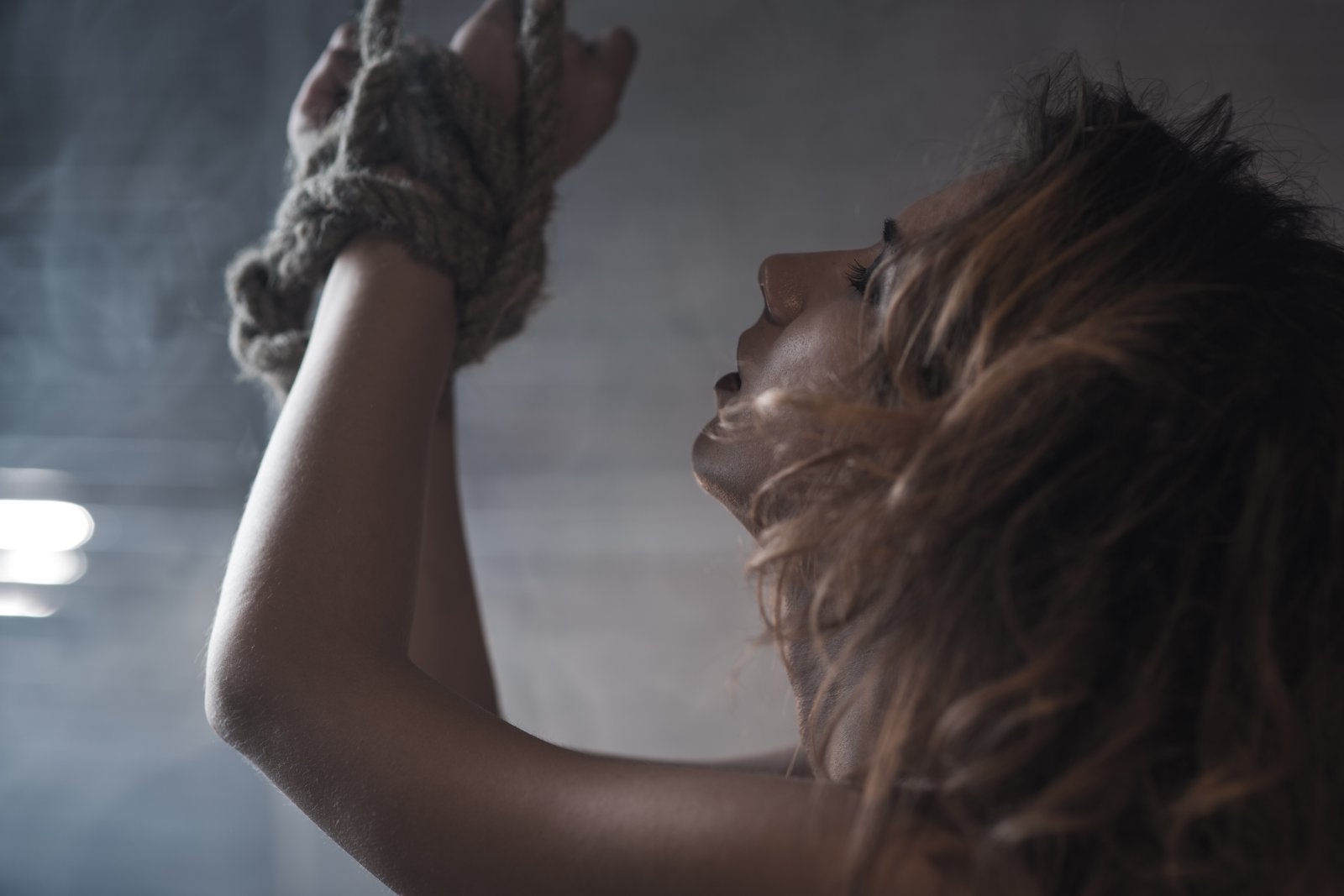While BDSM is fun, it’s essential to ensure it's safe and consensual. Getting kinky can be boundary-pushing, but it can also be a risky physical activity that can lead to abuse. Author and educator M. Christian weighs up the BDSM vs abuse dynamic and gives red flags to watch.
Recognizing abuse in BDSM relationships is key. There are an abundance of articles, online tutorials, and in-person classes that explore BDSM vs abuse. Such materials explain the difference between safe BDSM play and unhealthy dynamics that can lead to psychological and physical distress. Unfortunately, learning to prevent bruises and injuries is often more straightforward than safeguarding against emotional abuse.
Education, communication, and establishing an equal power dynamic are very important. There's no need to be scared of BDSM; being aware of potential hard and soft limits, as well as emotional risks, will guarantee that safe BDSM play is practiced at all times.
BDSM vs abuse
For many, BDSM play – particularly dynamics that involve domination and submission – can act as a manifestation of an erotic fantasy or intense desire within. This is all good, of course, but it’s critical to never lose sight of the fact that it's a fantasy. The dynamic is something that can’t, or shouldn’t, necessarily exist in the 'real' world.
In a situation where the fantasy spills over into reality, it can be hard to distinguish where BDSM ends and abuse begins. For example, a Dominant may hold their submissive to an unrealistic level of absolute obedience: forgetting in their enthusiasm that they are playing with a person and not an imaginary, idealized character.
But BDSM abuse can work in both directions, too. A submissive may be coerced, or convince themselves, that because they’re supposed to be totally subservient to their Dominant, that they should act in accordance with their every command. Even when it causes the submissive physical or emotional discomfort.
BDSM vs abuse: make sure you know the difference
True, there are some kinksters out there for whom this is a comfortable situation to push their boundaries. For many, though, recognizing abuse in BDSM is paramount to emotional and physical well-being. It’s vital to touch base often and check-in to see how every player is feeling to avoid the scene going too far.
“In a situation where the fantasy spills over into reality, it can be hard to distinguish where BDSM ends and abuse begins. For example, a Dominant may hold their submissive to an unrealistic level of absolute obedience.”
How someone chooses to stay grounded is a personal choice, but a good idea is to take regular breaks and talk as total and complete equals. This will ensure safe BDSM play and create a framework to discuss what is and isn't working in a dynamic.
MORE LIKE THIS:
- Fear Play: A Guide to Going Beyond Kinky Talk
- Predicament Bondage: A Guide
- BDSM Knife Play: Testing Your Edges
Another recommendation is to confide in a good non-BDSM friend from outside the community who you can freely talk with. This will keep your perspective in check. Even better would be to find a therapist with some knowledge of how kink relationships work and the emotional risks when BDSM turns into abuse.
Equal communication is essential
Echoing back to “total and complete equals,” a big warning sign that a BDSM scene or relationship has become abusive is when a Dominant refuses to relinquish their hold over a submissive, even when they are communicating outside their play roles.
BDSM abuse comes in different forms: look for the red flags
BDSM abuse comes in many forms, such as a partner refusing to drop out of their role — even for a moment — or making it clear that they still hold emotional control over the situation. Let's say a Dominant says that the submissive they're playing with can call a break or renegotiate the play at any time, but doing so will have some kind of negative impact on the relationship. This may force the submissive back into their role to stay emotionally connected with the Dominant, thereby pushing them into a scene they're uncomfortable with.
“BDSM abuse comes in many forms, such as a partner refusing to drop out of their role – even for a moment – or making it clear that they still have emotion control over the situation.”
Furthermore, abuse in BDSM relationships doesn't always come from the Dominant side. Submissives, too, have the potential to emotionally manipulate a situation and coerce the hand of their Dominant. If they're resistant to breaking a BDSM dynamic, or threaten emotional, physical or self-harm in any way, this is also abusive behavior.
BDSM vs abuse: a few warning signs
Here are a few potential red flags a submissive entering into a BDSM relationship should look out for:
-
If a Dominant refuses to admit when they have made a mistake, especially when it involves emotional or physical safety concerns.
-
If a Dominant makes unreasonable demands, such as forcing someone to cut ties with friends and family.
- or to support the Dominant financially (unless the dynamic is an established financial relationship), think twice about continuing the discussion.
For the Dominants looking to avoid BDSM abuse, if a submissive is reluctant to act independently, demands unrealistic attention, or passive-aggressively states that they can’t function without being controlled, consider this a major red flag.
How to get out of an abusive situation
So, what to do if you're in a dynamic where BDSM turns into abuse? First, don’t doubt your feelings – if you feel abused, then that's your truth. Act quickly to avoid further ill-treatment and seek out professional help if needed, including mental health experts, law enforcement, or medical services.
Trust your instincts and value yourself as a person, not who you are in a BDSM context. Recognizing abuse in BDSM can be tough, but if you find yourself in a situation where you feel demeaned, manipulated, or abused in a non-consensual way, reach out and get help.
BDSM should be fun. It can be intense, thrilling, and even life-changing, but it should never equal abuse. Play smart, play aware, and remember that BDSM is always about being safe, sane, and most of all, consensual. •
M. Christian is a respected author and BDSM educator, having taught classes on everything from polyamory to tit torture for venues such as the SF Citadel, Good Vibrations, Beat Me In St. Louis and many others.
New to BDSM? Head to the forum now to get tips on playing safe and paying smart.
Image shutterstock/Media Home, shutterstock/noPPonPat
-
 134
134


-min.jpg.9323913df318207fb0b1e7787b55c90d.jpg)

Join the conversation
You can post now and register later. If you have an account, sign in now to post with your account.